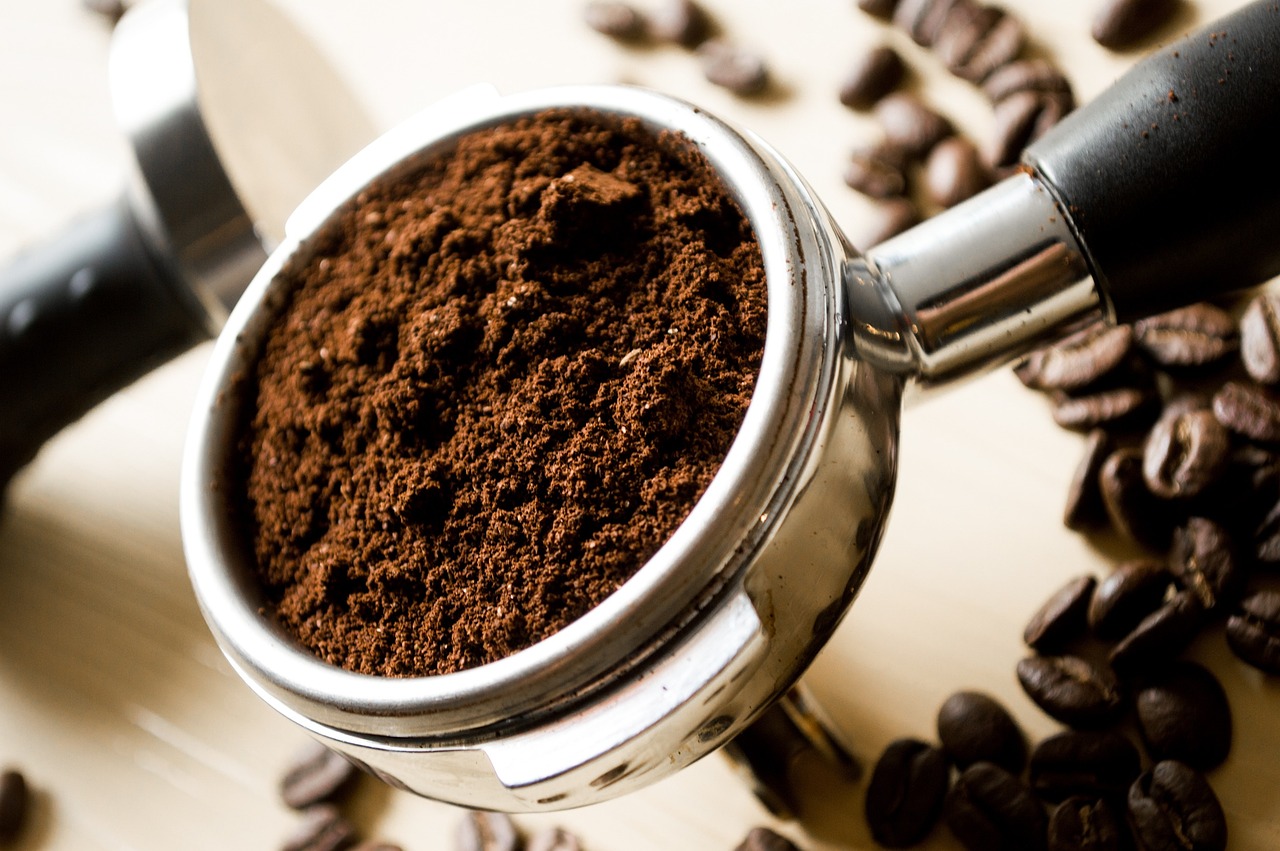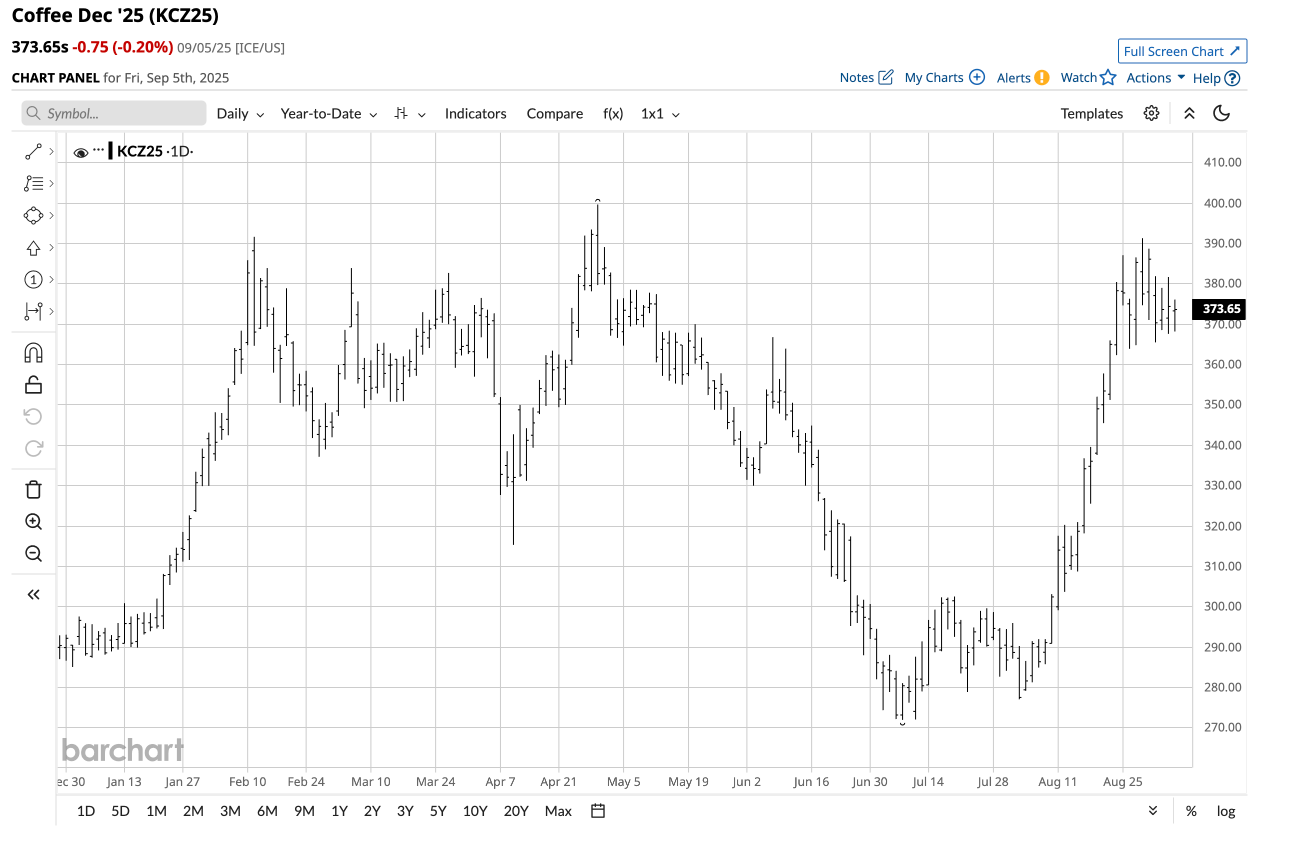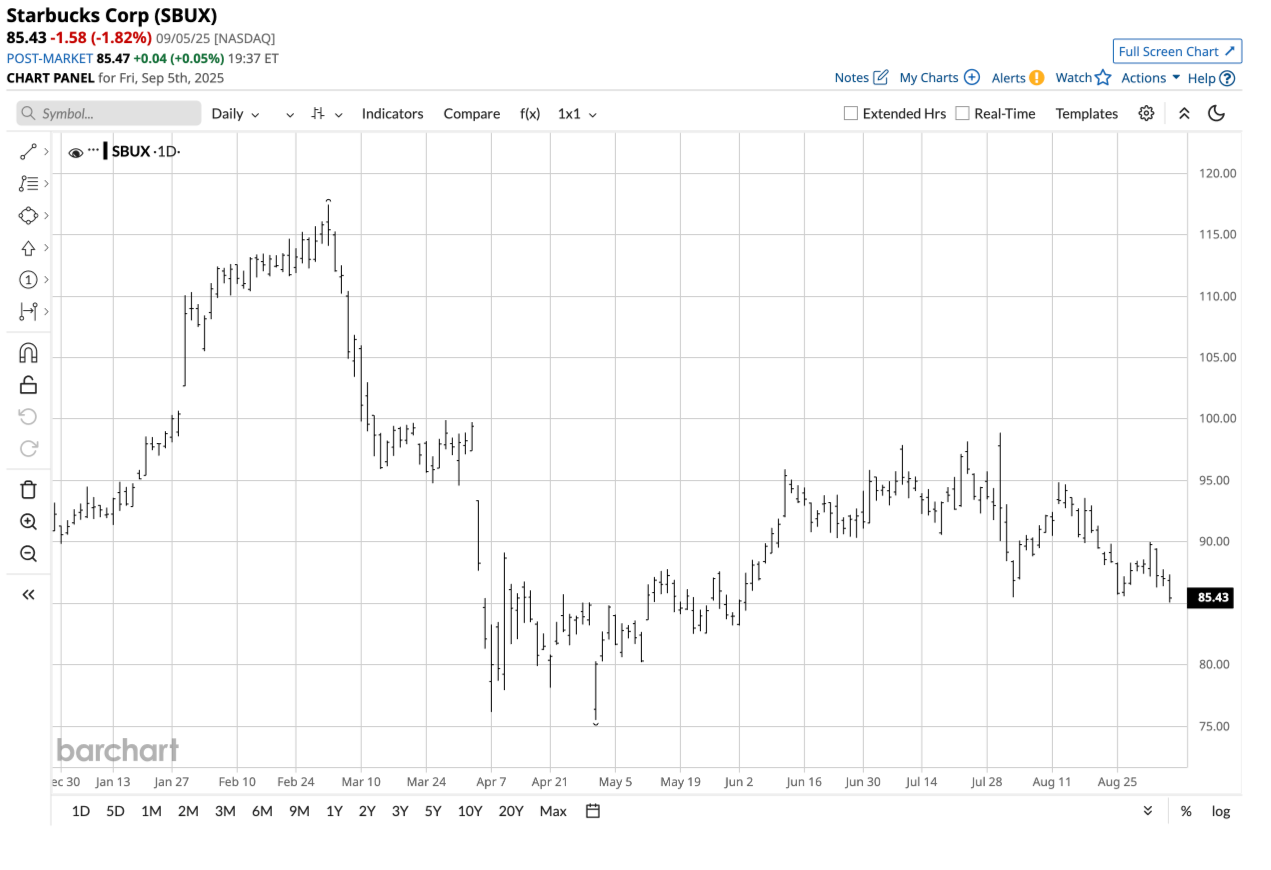
ICE Arabica coffee futures are highly volatile. Before Q4 2024, the all-time high price was the peak from Q2 1977 of $3.3750 per pound. My Q2 2025 soft commodities report on Barchart noted that nearby ICE Arabica coffee futures dropped 19.22% in Q2 and were 4.07% lower over the first half of 2025, settling at $3.0675 per pound on June 30. At over the $3.70 per pound level in September 2025, coffee remains in a long-term bullish trend and has been moving towards a challenge of the early 2025 record peak.
Coffee recovers and soars
ICE Arabica coffee futures for December 2025 delivery fell to a $2.72 per pound low on July 8.

The daily year-to-date chart of December Arabica coffee futures highlights the 31.94% decline from the April 29 high of $3.9965 to the July 8 low of $2.72 per pound. The coffee futures ran out of downside momentum on July 8, marking a significant bottom for the soft commodity.
On August 28, the December contract reached its most recent peak of $3.9130, 43.9% higher than the low of July 8.
Supply issues point to higher prices
Brazil is the world’s leading coffee-producing country. Dry weather conditions are raising concerns about reduced crop yields. Meanwhile, colder temperatures contributed to the supply concerns.
Open interest is the total number of open long and short positions in a futures market. ICE coffee futures OI has increased 11.5%, rising from 146,352 on August 12 to 163,170 contracts on August 28. The rising open interest signals increased speculative buying in the coffee futures market. Meanwhile, ICE coffee inventories have declined to multi-year lows, resulting in a tighter global supply.
Tariffs are bullish- Brazil and Vietnam are the leading producers
Brazil and Vietnam are leading coffee producers. The U.S. has imposed significant tariffs on Brazilian and Vietnamese imports into the United States. The tariffs have created trade barriers that only exacerbate the supply concerns. While coffee roasters have absorbed the higher prices, Well-capitalized Brazilian farmers are holding back sales, creating some negotiating power in the current trade environment. The bottom line is that tariffs are trade barriers that distort prices and have only exacerbated the most recent rally in the ICE coffee futures market.
Rising coffee prices could be a factor weighing on Starbucks shares
Coffee beans are a critical cost of goods sold factor for Starbucks (SBUX). While the U.S. stock market reached new all-time highs in August, SBUX shares have lagged behind the overall market.

The year-to-day chart of SBUX shares highlights the over 27.5% decline from the March 3 high of $117.46 to $85.06 on September 5, 2025. At the $85.32 level on September 5, SBUX shares were 6.4% lower than the 2024 closing level. High coffee prices are one of the factors weighing on SBUX shares.
No ETF or ETN products that track coffee futures
The iPath Coffee Subindex ETF (JO) ceased trading on June 8, 2023. Since then, the only avenue for a risk position in Arabica coffee has been the futures and futures options on the Intercontinental Exchange.
Each coffee futures contract contains 37,500 pounds of coffee beans. At $3.7365 per pound on September 5, the December Arabica coffee contract was valued at $140,118.75. The ICE original margin requirement of $10,659 means that market participants can control $141,562.50 of the coffee beans for a 7.6% down payment. If equity on a long or short risk position falls below $9,690 per contract, the exchange requires maintenance margin.
Expect significant volatility in the coffee futures market over the coming weeks and months, as supply concerns, tariffs, and low inventories are likely to continue causing high price fluctuations.
On the date of publication, Andrew Hecht did not have (either directly or indirectly) positions in any of the securities mentioned in this article. All information and data in this article is solely for informational purposes. For more information please view the Barchart Disclosure Policy here.






